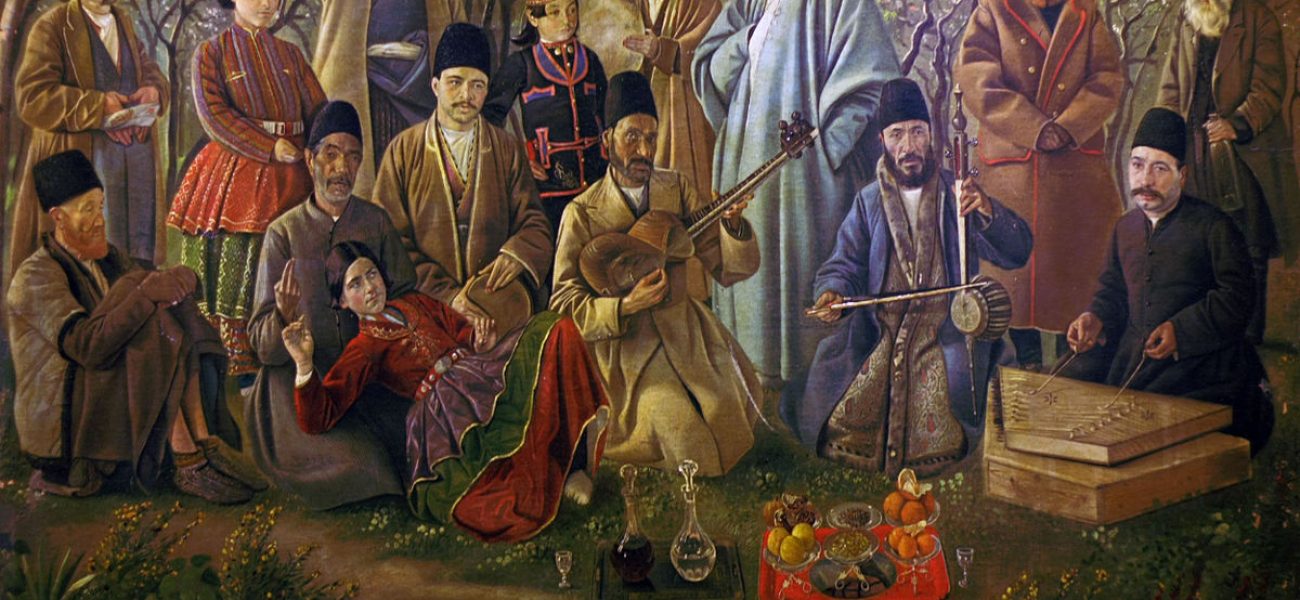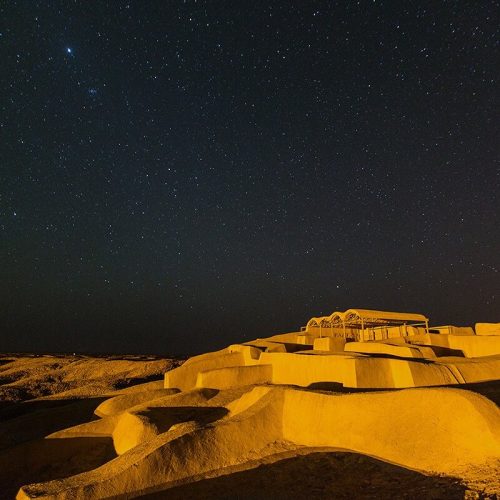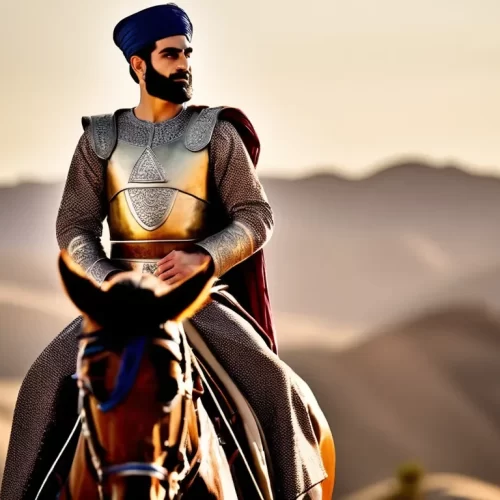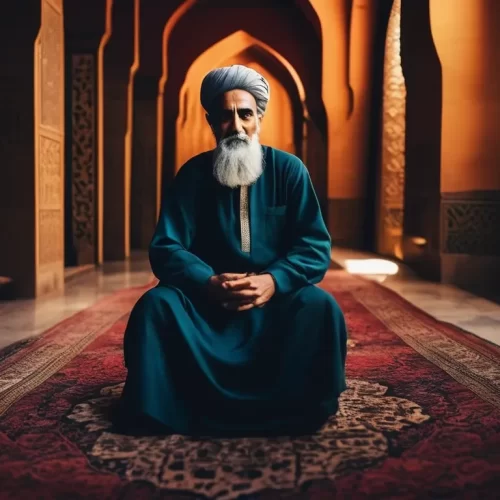In the heart of ancient Persia, amidst the whispers of deserts and the murmur of lush valleys, a symphony of melodies has echoed through the ages. Persian traditional music, with its rich history, intricate characteristics, and unique instruments, is more than just a cultural artifact—it is the soul of a nation, a poetic expression of its people’s joys, sorrows, and timeless spirit. This article embarks on a literary and poetic journey through the enchanting world of Persian traditional music, tracing its history, exploring its defining characteristics, and unveiling the instruments that breathe life into its melodies.
History of Persian Traditional Music
The history of Persian traditional music is a tapestry woven with threads of ancient civilizations, royal courts, and mystical traditions. Its roots extend deep into the soil of antiquity, flourishing through centuries of cultural and artistic evolution.
Ancient Origins
The origins of Persian music can be traced back to the Elamite civilization (2700–539 BCE) and the subsequent Achaemenid Empire (550–330 BCE). Archaeological findings, including inscriptions and reliefs, suggest that music was an integral part of religious ceremonies, royal festivities, and daily life. The use of lyres, harps, and flutes during this period laid the groundwork for the development of more complex musical forms.
With the rise of the Sassanian Empire (224–651 CE), Persian music reached new heights. The Sassanian kings, particularly Khosrow II, were great patrons of the arts. The legendary court of Khosrow II is said to have hosted musicians like Barbad, who created the “Khosravani” melodies—a precursor to the modal system that characterizes Persian music today. This era also saw the creation of the “Dastan,” a narrative form that combined music and poetry, paving the way for the later fusion of these two art forms.
Islamic Golden Age
The Islamic conquest of Persia in the 7th century CE brought profound cultural exchanges, enriching Persian music with new influences while preserving its core essence. During the Islamic Golden Age (8th to 13th centuries), Persian music thrived in the cosmopolitan courts of Baghdad and Cordoba. Persian scholars and musicians, such as Avicenna and Farabi, made significant contributions to music theory, codifying the scales and modes that would become the foundation of Persian music.
The Safavid dynasty (1501–1736) further nurtured Persian music, integrating it into the fabric of society. Music became a vital component of courtly life, religious ceremonies, and Sufi mysticism. The Safavid period also saw the development of the “Radif,” a collection of traditional melodies and modes that serves as the basis for Persian classical music. This era cemented the importance of the master-apprentice tradition, ensuring the transmission of musical knowledge through generations.
Qajar Era and Modern Developments
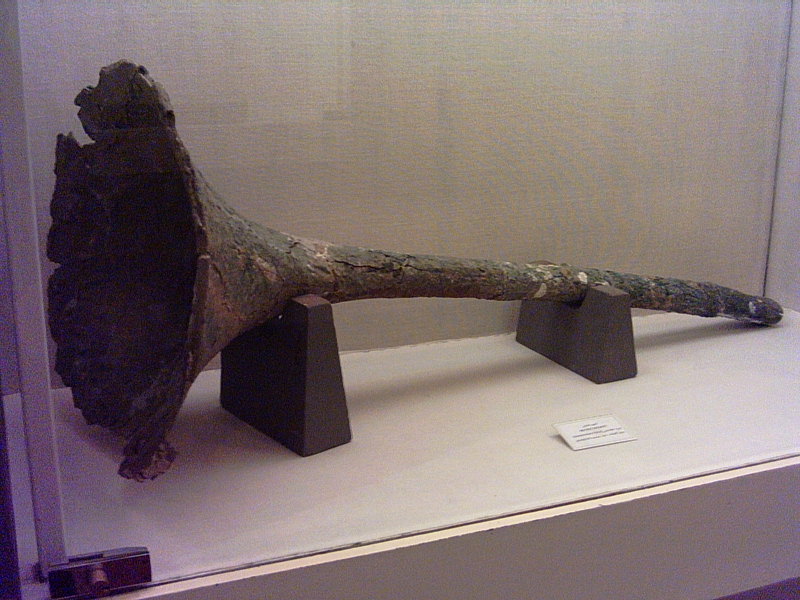
The Qajar era (1789–1925) witnessed a renaissance of Persian traditional music. The Qajar kings, particularly Naser al-Din Shah, were avid patrons of the arts, fostering a vibrant cultural milieu. The “Tasnif,” a vocal genre that combines poetry with music, gained popularity during this period, reflecting the poetic soul of Persian music.
The early 20th century brought new challenges and opportunities for Persian music. The influence of Western music, along with political and social changes, led to a fusion of traditional and modern elements. The establishment of the National Conservatory of Music in 1949 and the efforts of musicians like Ruhollah Khaleqi and Abolhasan Saba played a crucial role in preserving and revitalizing Persian traditional music.
In contemporary Iran, Persian traditional music continues to evolve, balancing respect for its ancient roots with innovative expressions. Renowned musicians such as Mohammad Reza Shajarian, Hossein Alizadeh, and Kayhan Kalhor have brought Persian music to international acclaim, ensuring its place in the global musical heritage.
Characteristics of Persian Traditional Music
Persian traditional music is characterized by its intricate modal system, emotive expression, and deep connection to Persian poetry. Its structure and aesthetics reflect the philosophical and spiritual dimensions of Persian culture.
Modal System: The Dastgah
At the heart of Persian traditional music lies the “Dastgah” system, a complex modal framework that organizes melodies and modes. Each Dastgah consists of several “Gushehs” (melodic units) that define its unique character and emotional expression. There are twelve principal Dastgahs, each with its own distinct mood and aesthetic.
The Dastgah system allows for extensive improvisation, enabling musicians to explore and express a wide range of emotions. This improvisational nature is a hallmark of Persian music, reflecting the spontaneity and fluidity of Persian artistic expression. Musicians often embark on a musical journey, weaving through the Gushehs with creativity and sensitivity, creating a dynamic and ever-evolving performance.
Rhythmic Patterns: The Iqa
Rhythm in Persian traditional music is governed by “Iqa” (rhythmic cycles), which provide a structured yet flexible framework for compositions and improvisations. These rhythmic patterns range from simple to complex, each contributing to the overall texture and mood of the music. The interplay between rhythm and melody in Persian music is intricate, with rhythmic variations adding depth and nuance to the performance.
Connection to Persian Poetry
One of the most enchanting aspects of Persian traditional music is its profound connection to Persian poetry. The integration of poetry and music creates a lyrical and emotive experience, where the words and melodies enhance each other’s beauty. Persian poets such as Hafez, Rumi, and Saadi have provided a rich repertoire of verses that musicians draw upon, infusing their performances with timeless wisdom and emotion.
The vocal forms “Avaz” and “Tasnif” are central to this tradition. Avaz is a non-metric, improvisational vocal style that allows the singer to explore the emotional depth of the poetry, while Tasnif is a more structured form that combines poetry with melodic and rhythmic elements. Both forms exemplify the harmonious marriage of music and poetry, offering a window into the Persian soul.
Emotive Expression: The Radif
The “Radif” is a collection of ancient melodies and modes that serves as the foundation for Persian traditional music. Passed down through generations, the Radif encapsulates the essence of Persian musical heritage. Each Radif contains hundreds of Gushehs, each with its own emotional and melodic character.
The Radif is not just a technical framework but a spiritual and philosophical journey. Musicians spend years mastering the Radif, internalizing its nuances and subtleties. This deep immersion allows them to convey a wide range of emotions, from profound melancholy to ecstatic joy, creating a powerful and emotive musical experience.
Instruments of Persian Traditional Music
The instruments of Persian traditional music are as diverse and expressive as the music itself. Each instrument brings its own unique voice to the ensemble, contributing to the rich tapestry of sound that defines Persian music.
Tar
The “Tar” is a plucked string instrument with a double-bowl body and a long neck. It has six strings and is played with a small brass plectrum. The Tar’s resonant and rich sound makes it a central instrument in Persian music, capable of producing both delicate and powerful tones. Its versatility allows for intricate melodic lines and dynamic improvisations, making it a favorite among Persian musicians.
Setar
The “Setar” is a smaller, more delicate cousin of the Tar. It has four strings and a narrow, elongated body. Played with the index finger’s nail, the Setar produces a soft and intimate sound, ideal for solo performances and contemplative music. The Setar’s subtlety and expressiveness make it a beloved instrument for conveying the introspective and spiritual aspects of Persian music.
Santur
The “Santur” is a hammered dulcimer with a trapezoidal body and multiple strings stretched over wooden bridges. It is played with small mallets called “Mezrabs.” The Santur’s bright and shimmering sound adds a distinctive texture to Persian music, capable of intricate rhythms and rapid melodic passages. Its versatility allows it to be both a solo and ensemble instrument, contributing to the dynamic range of Persian musical expression.
Kamancheh
The “Kamancheh” is a bowed string instrument with a spherical body and a long neck. It has four strings and is played with a horsehair bow. The Kamancheh’s haunting and expressive sound is central to Persian music, capable of conveying deep emotion and lyrical beauty. Its ability to produce both sustained and staccato notes makes it a versatile instrument for both melodic and rhythmic elements.
Ney
The “Ney” is an end-blown reed flute with a hollow, cylindrical body. It has six finger holes and one thumb hole, allowing for a wide range of pitches and tones. The Ney’s breathy and ethereal sound is deeply evocative, often associated with Sufi music and spiritual traditions. Its ability to produce microtones adds to its expressiveness, making it a powerful instrument for conveying the mystical and transcendental aspects of Persian music.
Daf
The “Daf” is a large frame drum with metal rings attached to the inside of the frame. It is played with both hands, producing a rich and resonant sound. The Daf’s rhythmic patterns are integral to Persian music, providing the pulse and drive that underpin melodic improvisations. Its versatility allows for a wide range of dynamics and rhythmic complexities, making it a vital instrument in both traditional and contemporary Persian music.
Tombak
The “Tombak,” also known as the “Zarb,” is a goblet-shaped drum played with the fingers and palms. It has a single, tunable head made of animal skin. The Tombak’s intricate rhythms and percussive nuances are essential to Persian music, providing both rhythmic foundation and expressive accents. Its dynamic range and technical possibilities make it a central instrument in Persian percussion, capable of both solo and ensemble performances.
Qanun
The “Qanun” is a plucked zither with a trapezoidal body and multiple strings stretched over a series of bridges. It is played with small plectrums attached to the fingers. The Qanun’s bright and resonant sound adds a distinctive texture to Persian music, capable of producing rapid arpeggios and intricate melodic lines. Its versatility allows it to be both a solo and ensemble instrument, contributing to the rich tapestry of Persian musical expression.
The Role of Persian Traditional Music in Society
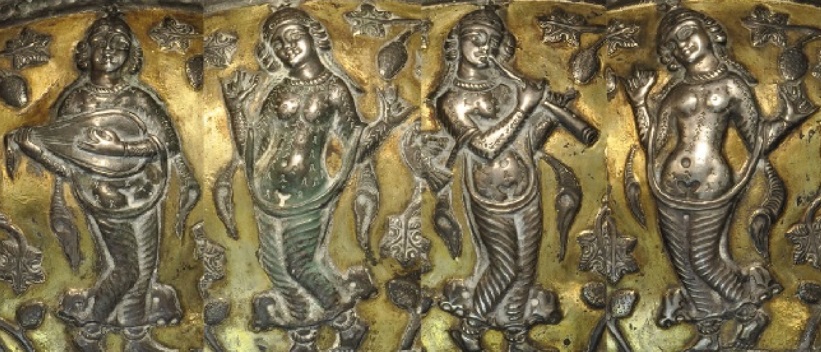
Persian traditional music is more than just an artistic expression; it is deeply intertwined with the social, cultural, and spiritual life of the Persian people. Its role in society extends beyond entertainment, serving as a medium for storytelling, cultural preservation, and spiritual exploration.
Storytelling and Cultural Preservation
Persian traditional music is a powerful vehicle for storytelling, conveying the rich history and cultural heritage of the Persian people. Through music, stories of ancient heroes, mythical tales, and historical events are passed down through generations, preserving the collective memory and identity of the community.
The integration of poetry and music in Persian traditional music further enhances its storytelling capabilities. Poems by great Persian poets like Hafez, Rumi, and Saadi are set to music, creating a lyrical and emotive narrative that resonates with listeners. This fusion of poetry and music not only preserves the literary heritage of Persia but also ensures that the wisdom and beauty of these poetic works continue to inspire and enlighten.
Spiritual and Mystical Dimensions
The spiritual and mystical dimensions of Persian traditional music are profound, offering a pathway to transcendence and inner reflection. Sufi music, in particular, is deeply connected to Persian traditional music, using its melodies and rhythms to facilitate spiritual practices and mystical experiences.
In Sufi gatherings, or “Sama,” music and dance are used as vehicles for achieving spiritual ecstasy and union with the divine. The Ney, with its breathy and ethereal sound, is often used in these settings, symbolizing the soul’s longing for reunion with its creator. The repetitive rhythms of the Daf and the meditative melodies of the Setar create an atmosphere of contemplation and spiritual immersion.
This spiritual dimension of Persian traditional music is not limited to Sufi practices; it permeates the broader cultural and religious life of the Persian people. Music is used in religious ceremonies, festivals, and personal moments of reflection, providing a source of comfort, inspiration, and connection to the divine.
Social and Communal Functions
In addition to its artistic and spiritual roles, Persian traditional music serves important social and communal functions. It brings people together in celebration and solidarity, fostering a sense of community and shared identity. Music is a central feature of Persian festivals, weddings, and social gatherings, where it creates a festive and joyful atmosphere.
The master-apprentice tradition in Persian music also plays a crucial role in social and cultural continuity. Masters, or “Ostads,” impart their knowledge and skills to apprentices, ensuring that the musical heritage is preserved and passed down through generations. This tradition not only maintains the technical and artistic standards of Persian music but also reinforces the cultural values and social bonds that underpin the community.
Contemporary Perspectives and Global Influence
In the modern era, Persian traditional music continues to evolve, balancing the preservation of ancient traditions with innovative expressions. The global recognition of Persian music and the contributions of contemporary musicians have brought new dimensions to this rich musical heritage.
Renowned Musicians and International Acclaim
Contemporary Persian musicians such as Mohammad Reza Shajarian, Hossein Alizadeh, Kayhan Kalhor, and Parviz Meshkatian have achieved international acclaim, bringing Persian traditional music to a global audience. Their performances, recordings, and collaborations with artists from other musical traditions have highlighted the universal appeal and profound beauty of Persian music.
Mohammad Reza Shajarian, often referred to as the “Voice of Persia,” has been instrumental in revitalizing and promoting Persian traditional music. His masterful vocal performances, deeply rooted in the Radif tradition, have captivated audiences worldwide, earning him numerous accolades and honors.
Hossein Alizadeh, a virtuoso Tar and Setar player, has been at the forefront of innovative musical explorations, blending traditional Persian music with contemporary and cross-cultural elements. His compositions and improvisations showcase the dynamic and evolving nature of Persian music, while remaining deeply connected to its roots.
Kayhan Kalhor, a master of the Kamancheh, has pushed the boundaries of Persian music through his collaborations with international musicians and his contributions to world music. His expressive and emotive performances have brought the haunting beauty of Persian music to diverse audiences, enriching the global musical landscape.
Fusion and Innovation
The fusion of Persian traditional music with other musical genres and traditions has led to exciting new developments and creative expressions. Musicians have experimented with incorporating elements of jazz, classical, and world music, creating hybrid forms that honor the essence of Persian music while exploring new artistic horizons.
These innovative approaches have expanded the reach and relevance of Persian traditional music, attracting new audiences and fostering cross-cultural understanding. Collaborative projects, such as the Silk Road Ensemble founded by cellist Yo-Yo Ma, have brought together musicians from different cultural backgrounds to create a rich tapestry of sound that celebrates the diversity and interconnectedness of global musical traditions.
Digital Media and Global Access
The advent of digital media has revolutionized the dissemination and accessibility of Persian traditional music. Online platforms, streaming services, and social media have enabled musicians to share their work with a global audience, breaking down geographical and cultural barriers. Digital archives and educational resources have also made it easier for enthusiasts and scholars to access and study the rich heritage of Persian music.
This increased accessibility has sparked renewed interest in Persian traditional music, both within Iran and internationally. Young musicians and audiences are discovering and engaging with this musical heritage, ensuring its continued vitality and relevance in the modern world.
Persian traditional music is a timeless and poetic expression of the Persian soul, a musical journey that spans millennia and resonates with the profound beauty and complexity of human experience. Its rich history, intricate characteristics, and unique instruments reflect the cultural, spiritual, and artistic essence of the Persian people. As we immerse ourselves in the enchanting melodies and rhythms of Persian traditional music, we are reminded of the enduring power of art to transcend boundaries, connect hearts, and convey the deepest truths of our shared humanity. Through the soul-stirring echoes of its music, Persia continues to sing, offering a timeless and universal song that celebrates the beauty and resilience of its cultural heritage.

